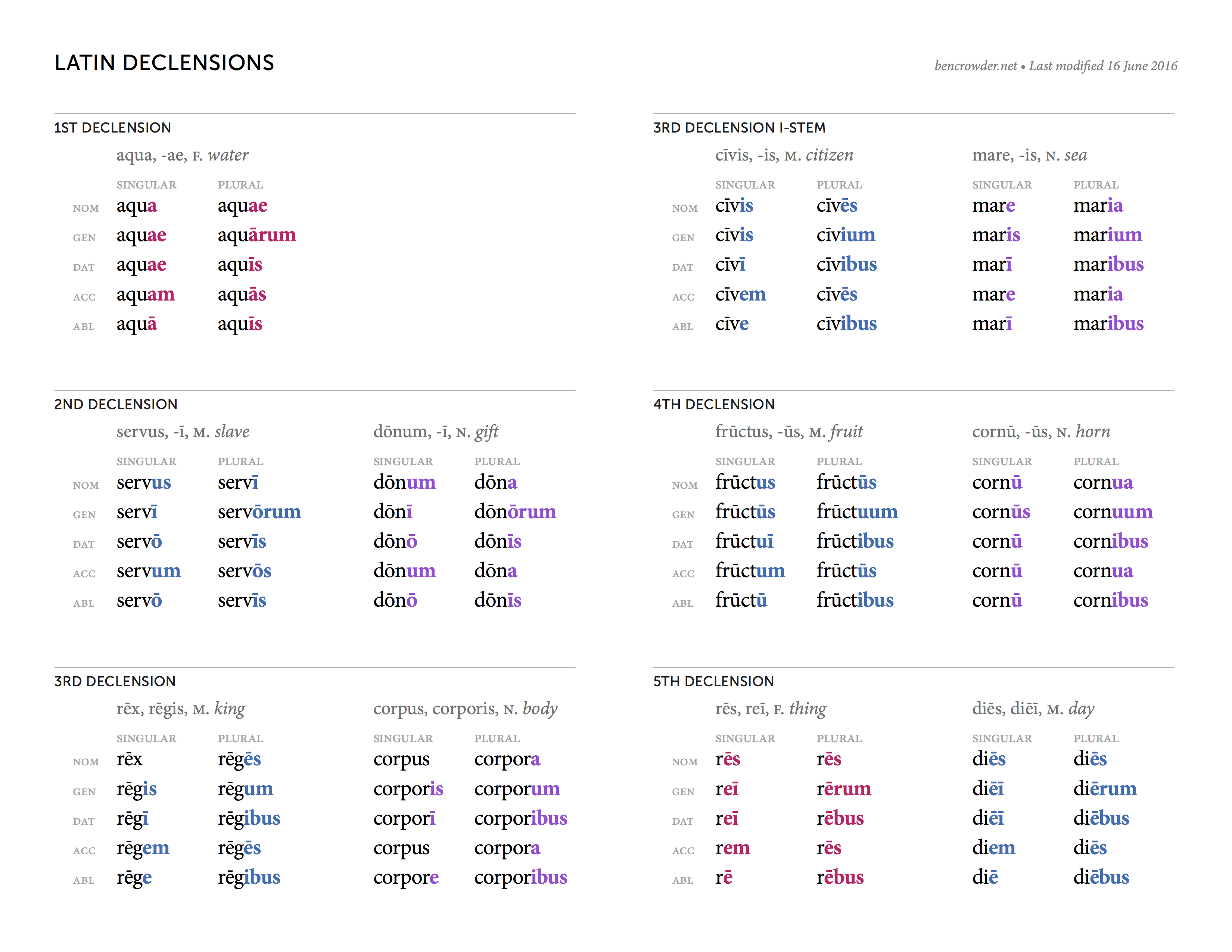Unit 1 - LATN 101 - F21
Unit 1 - Inflection of Nouns, Pronouns, Adjectives, and Verbs

Narrative Overview
In Unit 1, we will look at how inflection works in the Latin language. We begin by with the concept of an inflected language and detailing how Latin’s use of inflection differs from English’ use of it. The key takeaway here will be that while English primarily relies on word order to convey grammatical function, Latin uses word endings to do so.
We will then move to examine the various different substantives – noun, pronoun, and adjective – and how they are inflected in Latin. In spite of their different usages, all these substantive forms have three characteristics – case, number, and grammatical gender – and these characteristics signal the substantive’s role in a sentence. Consequently, we will learn how to recognize, form, analyze, and translate substantives and substantive phrases based on these characteristics. To accomplish this task, we will become familiar with the way that dictionary entries for substantives work and especially how these entries help us to understand the rules for the inflection of the particular substantive, something that is often referred to as a noun’s declension.
We will build on our discussion of substantive inflection by looking at verbal inflection. We will learn about the five characteristics of verbs – person, number, tense, voice, and mood – and how these characteristics create meaning in a Latin sentence. As we did with substantives, we will learn how to recognize, form, analyze, and translate verbs based on these characteristics. Once again, we will spend time learning about dictionary entries for verbs and how the information contained therein can help us to better understand a specific verbal form. We will also learn some of the rules for verbal inflection, i.e. conjugation.
The last part of this unit will look at how Latin puts together these inflected forms at the sentence level. We will learn about different types of sentence structures found in Latin, the particular collocations of verbal and substantive forms that they use, and the way that we translate these forms.
Objectives
By the end of Unit 1, you will be able to:
- Explain the basic principles of inflection in the Latin language as well as how it differs from English
- Articulate the different features of substantives (nouns, adjectives, and pronouns) and the information that these features provide
- Recognize and produce substantive inflection patterns and analyze their grammatical function in sentences
- Articulate the different features of verbal forms and the information that they provide
- Recognize and produce some basic verbal inflection patterns and analyze their grammatical function in sentences
- Explain how different grammatical features of language shape the way we understand the world around us
Table of Contents
- Nouns
- Adjectives
- Pronouns
- is, ea, id
- sui, sibi, se, se
- Demonstratives
- Intensifying
- -ius adjectives
- Verbs
- Perfect Indicative
- Imperfect Indicative
- Sentence Structure
Practice Exercises
- Reading dictionary entries for nouns
- Nominative and genitive forms
- Reading dictionary entries for adjectives
- Pronouns - Nominative and Genitive
- Demonstrative Pronouns - hic, haec, hoc - Nominative and Genitive
- Demonstrative Pronouns - ille, illa, illud - Nominative and Genitive
- Noun-Adjective agreement - nominative and genitive
- Mixed Declension Noun-Adjective agreement - all cases
- Conjugation Identification
- Perfect Active and Passive Verb Formation
- Imperfect Active and Passive Verb Formation
- Practice quiz #1
- Practice quiz #2
- Practice quiz #3
Assessment
Below are the dates on which your assessments are due:
- Wednesday, September 29 - Mastery quiz #1
- Friday, October 1 - Translation #1 due
- Monday, October 4 - Composition #1 due
Vocabulary
Below is the link to the vocabulary for Unit 1: